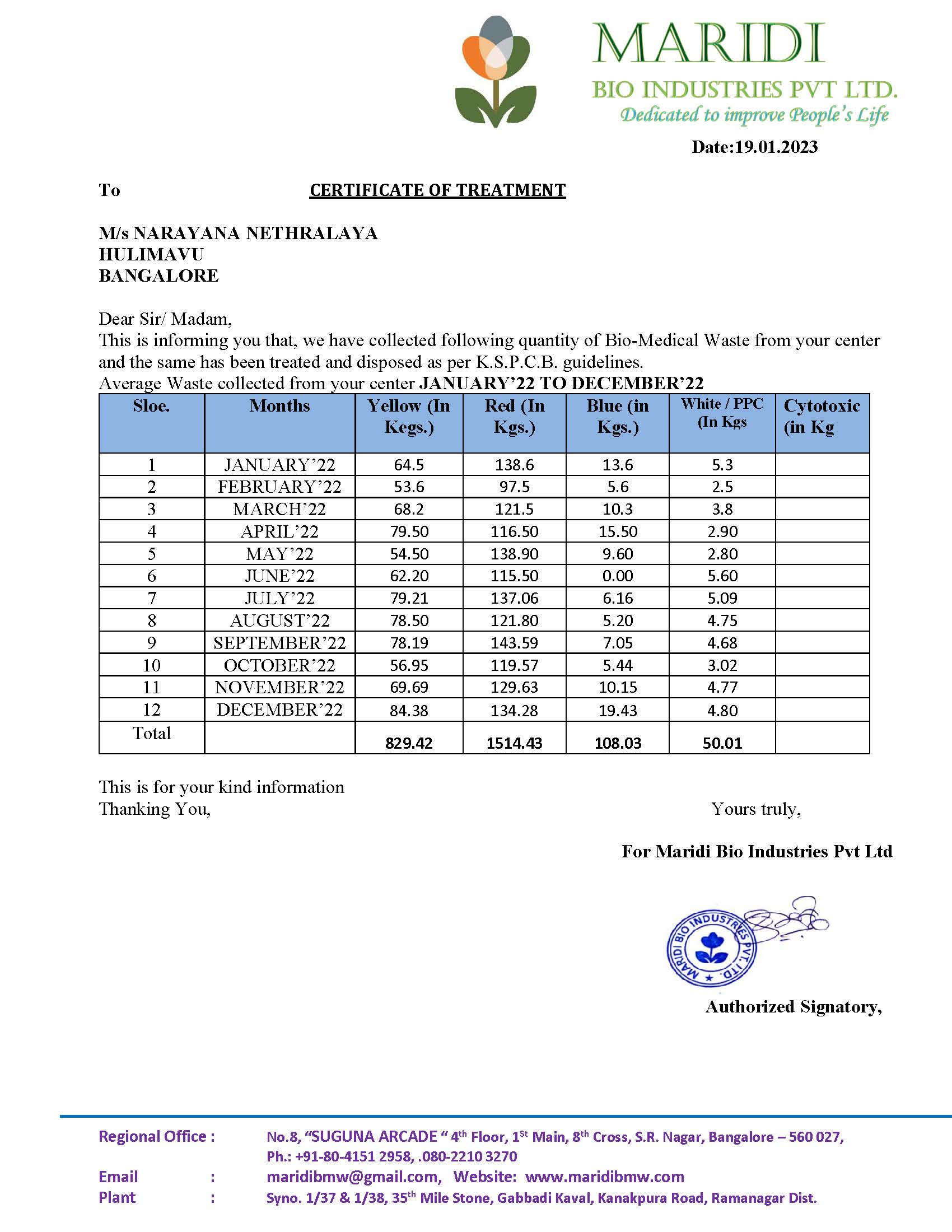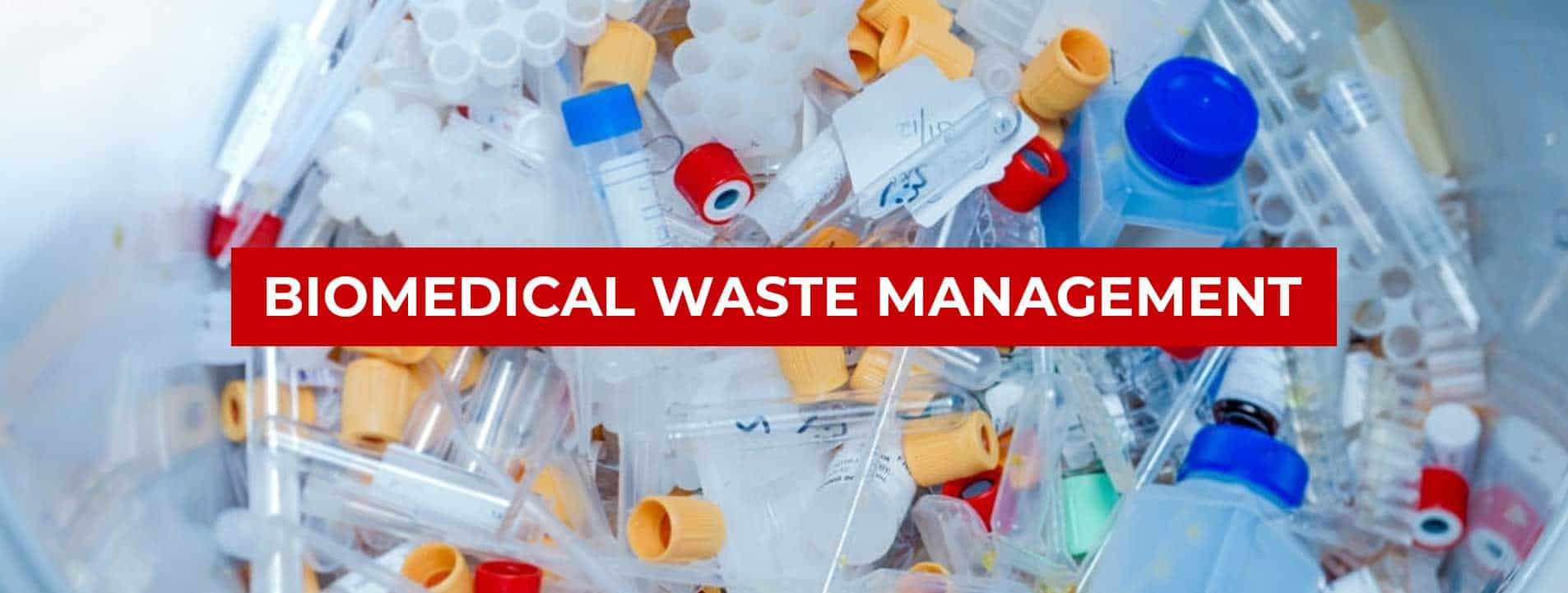
On an average, high income countries generate 0.5 kg of hazardous waste/bed/day when compared to 0.2 kgs/ bed/ day for low income countries. This is because quite often they are not segregating the hazardous and non hazardous waste appropriately. The result is contamination of the entire waste. According to Ministry of Environment and Forests, almost 28% of biomedical waste is left untreated and not disposed. Only two-thirds of the total biomedical waste is treated scientifically.
According to WHO, nearly 85% of all waste generated by hospital is general waste. The remaining 15% is hazardous biomedical waste subdivided as Infectious and Non-Infectious Waste.
Segregation is the most crucial step in bio-medical waste management. Effective segregation alone can ensure effective biomedical waste management. The colour coding for Biomedical Waste is as follows:
Yellow – PPE kits, human tissues, body parts, specimens, surgical waste, cotton, bandages, linen, dressings, solid plaster, casts
Red – Used plastic material, tubings, catheters, IV sets, syringes without needles, gloves, blood bags, aprons
Blue – Vials, glassware, contaminated glass, ampoules
White container – Needles, cut glass, scalpels, slides, nails, lancets, blades.
Need for Biomedical Waste Management
Inappropriate segregation results in mixing of hospital waste with general waste. Illegal dumping is a cause of grave concern and has led to heavy penalties on hospitals in the past.
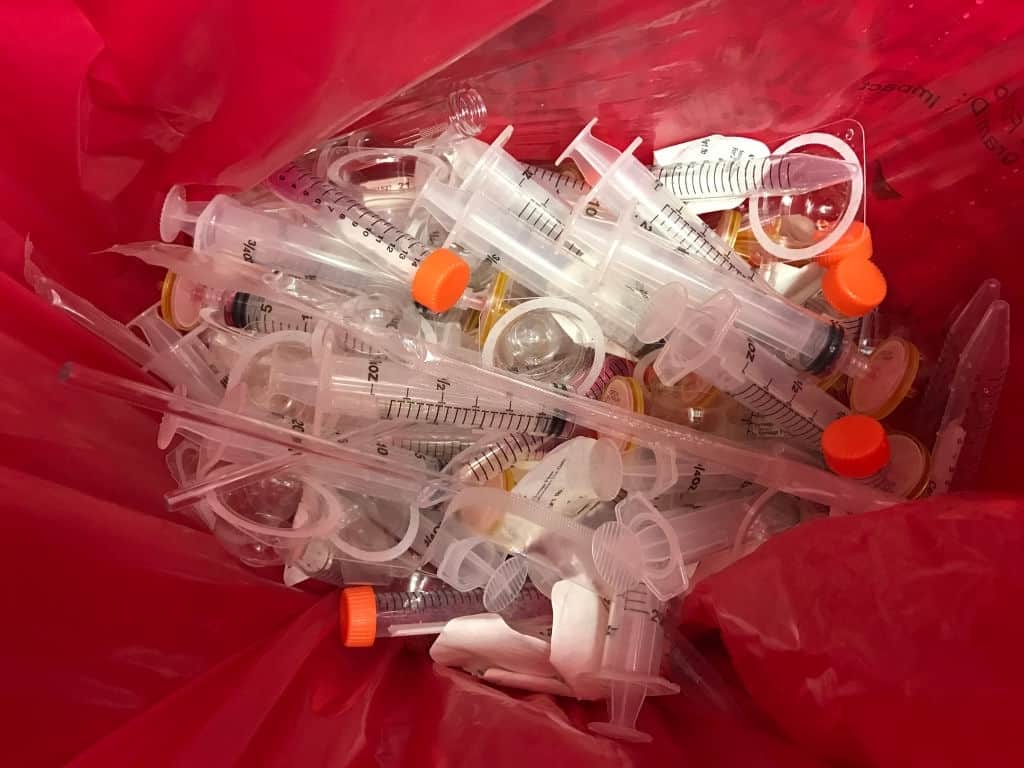
Case Study: A hospital in Bangalore was penalised heavily for dumping biomedical waste irresponsibly, action taken – BBMP levied a fine of Rs. 10 lakhs and ordered its trade license was cancelled.
Therefore, to prevent nosocomial infections in patients, risk of injuries from sharps and environmental pollution bring to light the importance of efficient biomedical waste management.
Collection and Segregation: A separate container is placed at every point of generation for general waste, to be disposed by municipal authority. NO infectious waste should be put in this container.
Location of containers: at the point of generation i.e. near OT tables, injection rooms, near nursing counters in wards, diagnostic service areas.
The waste bags and sharps containers should be filled to no more than three fourth capacity. Once this level is reached, they should be tied securely and removed from site of generation.
Garbage bin should be cleaned with disinfectant regularly.
Transportation: In house transportation of BMW from site of waste generation to central waste collection center, with in the premises of the hospital is done in trolleys / containers only, fitted with wheels for easy movement. The waste generated should be transported through a route which has low traffic flow of patients & visitors. Trolleys should be cleaned and disinfected thoroughly after each use. Biomedical waste shall not be stored beyond a period of forty –eight hours from its generation. Establish a bar-code and global positioning system for bags or containers containing biomedical waste to be sent out of the premises or place.
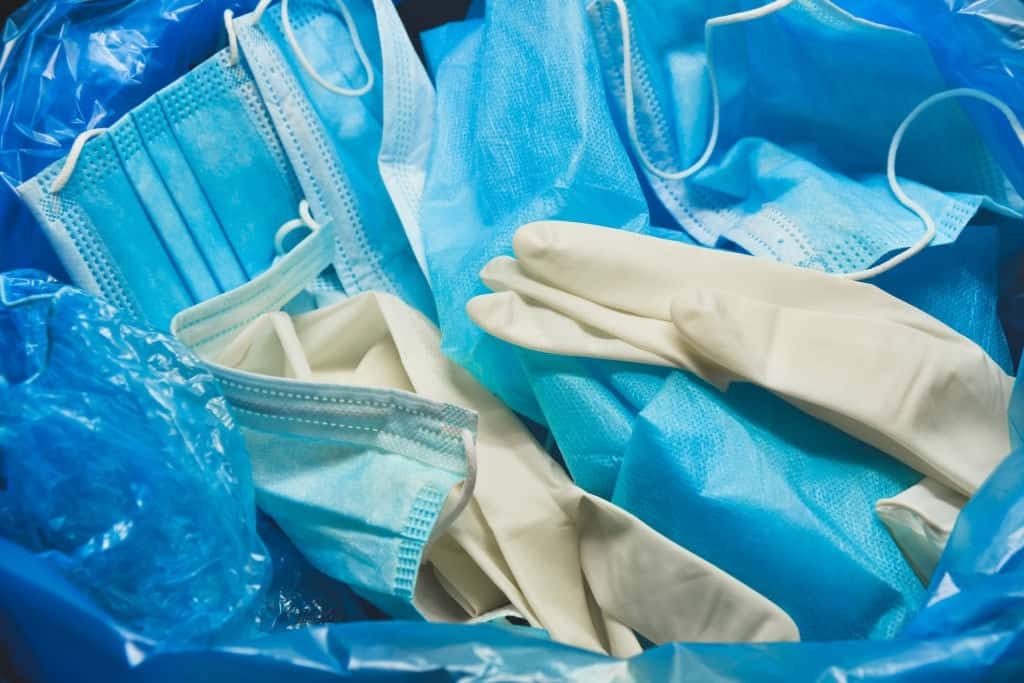
Safety Measures for handling biomedical waste
The use of personal protective equipment (PPEs) should be mandatory for all the personnel handling waste
- Gloves: rubber gloves should be used for waste handling by the waste handlers. After handling the waste, the gloves should be discarded
- Masks: waste handlers should also wear a mask while handling the waste, especially while sweeping
Health Check Up and Immunization
- Health check-up should be conducted at the time of induction and at least once in a year for all health care workers and others involved in handling of bio-medical waste and maintain the record of the same.
- All health care workers should be immunized with hepatitis B and Tetanus toxioid vaccination.
Quick Facts
- Untreated biomedical waste shouldn’t be stored beyond 24-48 hours
- Proper segregation of bio-medical waste prevents pollution
- Plastic container should be used to discard sharps
- Guideline/manual on Hospital Waste Management can be found with HIC nurse
- Syringes are discarded in red bag
- The containers to collect bio-medical waste should be placed near the point of generation of waste
- Health care workers should be immunized with hepatitis B and Tetanus toxioid vaccination.
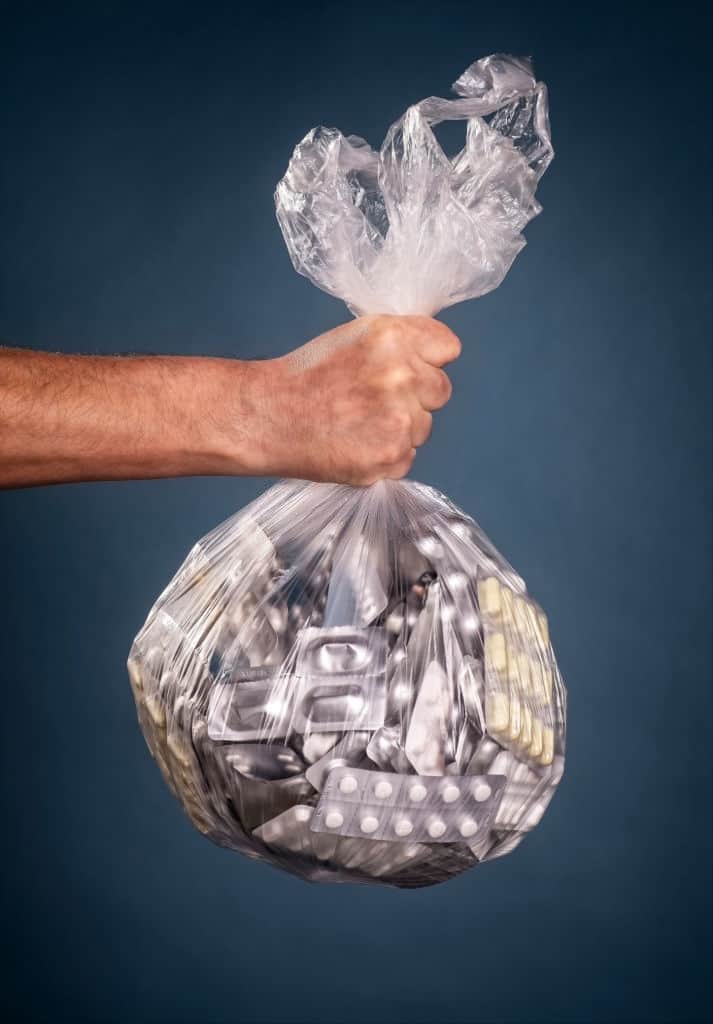
Narayana Nethralaya (NN1) – Rajajinagar Reports
Narayana Nethralaya (NN2) – Electronic City Reports
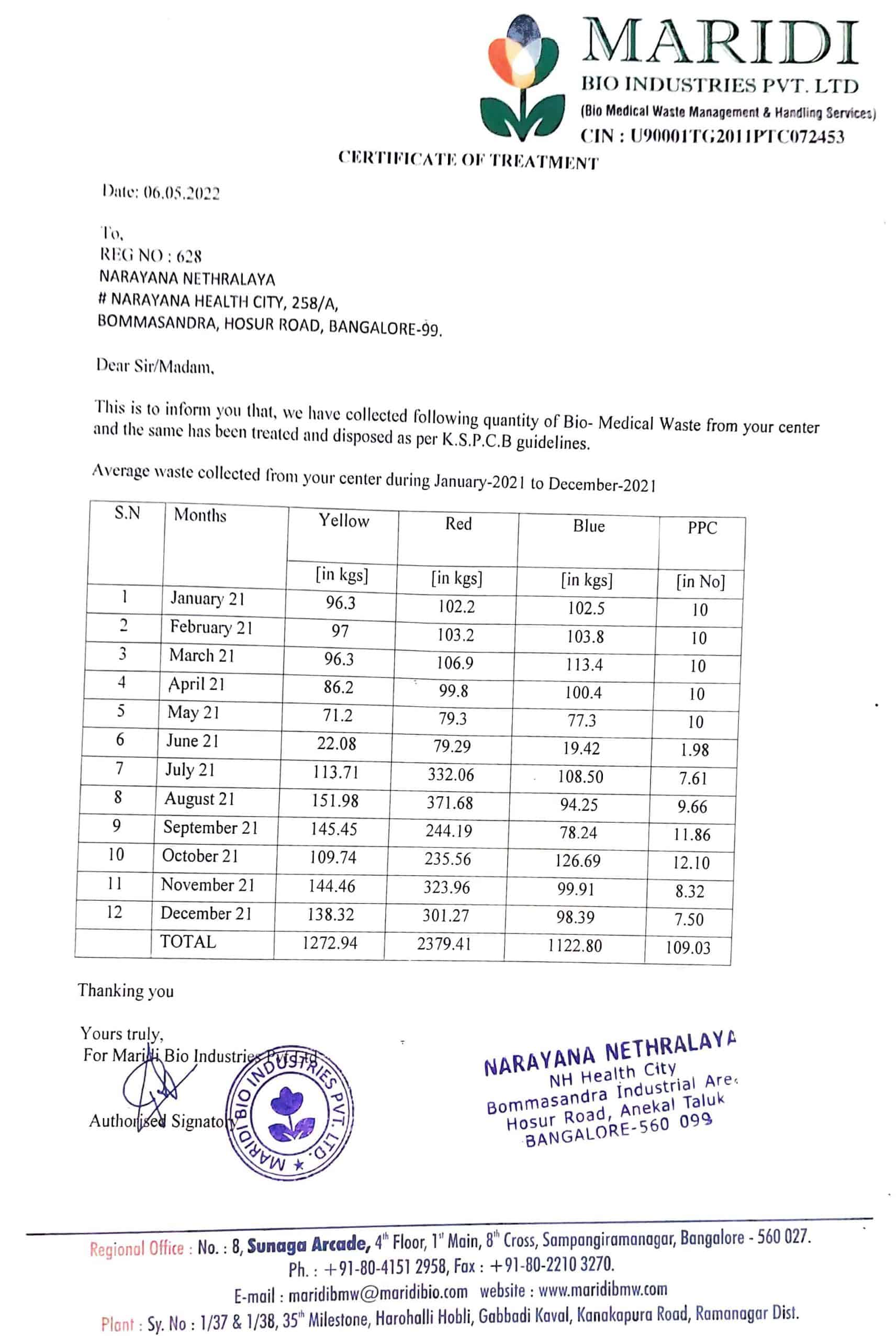
Narayana Nethralaya (NN4) – Bannerghatta Road Reports
